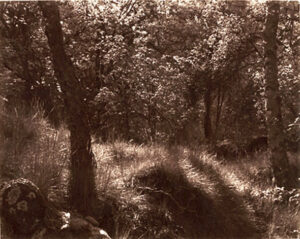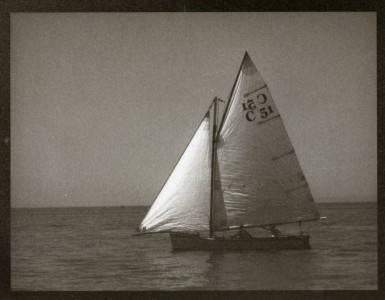-
September 7, 2024
9:30 am - 4:30 pm

ABOUT THE ARGYROTYPE PRINT:
This ‘user-friendly’ iron-based silver printing process was devised in 1996 by Mike Ware, using an unusual salt – silver sulphamate in a ‘single-bottle’ sensitiser solution with a long shelf-life. The resulting purplish-brown print of nanoparticle silver has a finer gradation than the traditional iron-silver processes, and may be readily toned.
THE ARGYROTYPE HISTORY: Following an academic career in chemistry, Mike has been independently committed since 1992 to studying the history, science, and art of ‘alternative’ photographic processes, especially siderotypes – those based on iron photochemistry. Mike Ware’s Argyrotype process is a latter-day improvement on the late nineteenth century processes of Kallitype, Van Dyke, Sepia print, and Brown print, which were, in turn, all offspring of Sir John Herschel’s Argentotype of 1842. http://www.mikeware.co.uk/mikeware/Argyrotype_Process.html Mike acts as a consultant to major museums,exhibits his personal photographic work, and conducts workshops, worldwide. His research has appeared in over 50 publications in both the popular and academic literature, including four books. http://www.mikeware.co.uk
ABOUT VAN DYKE BROWN:The Van Dyke Brown is similar to the original formula patented by Arndt and Troost in 1895 and based on the first iron-silver process, the argentotype, invented in 1842 by the English astronomer, Sir John Herschel. A photograph is created in beautiful warm brown tones by coating cotton paper with the light sensitive 3 part solution. Exposure to light changes the light sensitive salts to image forming metallic iron & silver.

Van Dyke Brown is a contact printing process – the negative is the same size as the photograph. This process does not require a darkroom.
ABOUT THE WORKSHOP: Argyrotype and van Dyke brown printing are similar in the coating, exposure and processing, this is an opportunity to compare and understand the benefits of both processes. A hands on workshop where the participants will produce a number of photographs in each of the processes. Outline of the day:
1. The negative (includes instructions on creating digital negatives)
2. Paper choices
3. The solutions – effects of adding gold chloride
4. Coating methods
5. Exposure
6. Processing – (includes toning)
All materials including lunch is provided – Starts at 9.00 am and concludes at 5.00 pm
ABOUT ELLIE YOUNG
Since 1994 Ellie has been practicing and studying the art craft and science, of ‘alternative’ photographic processes.
CLASS MAXIMUM 2
